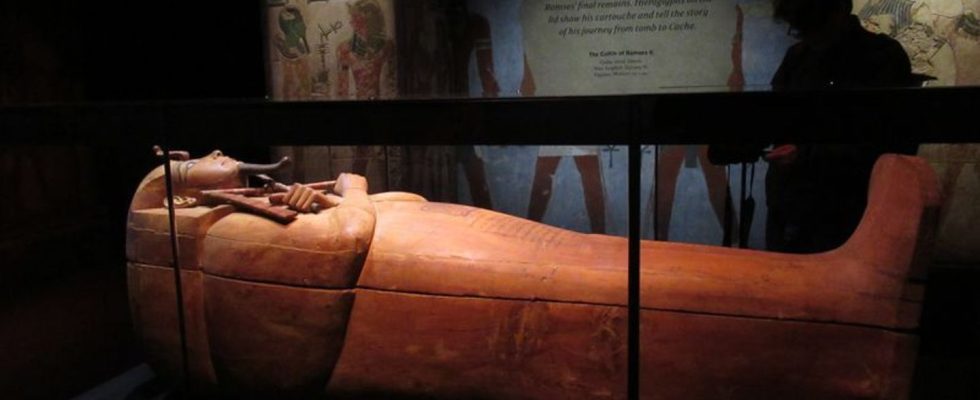archeology
Ramses exhibition – hype about the sarcophagus of the pharaoh
The sarcophagus of Ramses II is part of the exhibition “Ramses and the Gold of the Pharaohs” in Paris. photo
© Sabine Glaubitz/dpa
The French capital has one more attraction. The interest in the traveling exhibition “Ramses and the Gold of the Pharaohs” attracts the public in droves. Is there a record broken?
The Tutankhamum show in Paris attracted around 1.4 million people in 2019 – the traveling exhibition “Ramses and the Gold of the Pharaohs” could break the record. Because the French capital is the only station in the world for the sarcophagus of the powerful ruler of Ancient Egypt.
Over 145,000 tickets had already been sold before the opening on Friday.
While the exhibition in the Grande Halle de la Villette, which runs until September 6, has already been shown in San Francisco and Houston, the sarcophagus of Ramses II is only being shown in Paris – as a thank you and recognition, as the Egyptian ambassador Ehab Ahmed Badawy said on the occasion of the unveiling of the sarcophagus earlier in the week. Because in 1976, the more than 3000-year-old mummy was treated by French scientists against increasing fungal infestation.
Back then, the sarcophagus of the King of Kings, as he is also known, was received like a head of state – with a red carpet and a lot of pomp. It was the first time the sarcophagus left Egypt. Since then he is said not to have left the country on the Nile.
Masks, statues, jewelry from Ancient Egypt
Over 180 objects are presented in Paris, including royal masks, statues and jewellery. On display for the first time outside of Egypt are the head of a statue of the pharaoh, the outer coffin of Sennedjem – an artist who decorated the tombs of Seti I and Ramses II – and animal mummies. The mummies of cats, crocodiles and mongooses have only recently been discovered. The Egyptians worshiped animals as representations of the gods and mummified them.
With videos and reconstructions of burial chambers, the exhibition immerses the visitor in the time of the great pharaoh, to whom numerous superlatives are attributed. He was born around 1303 BC. Born and died in his nineties 1213 B.C. With a tenure of 66 years, he was one of the longest-serving heads of state in the world. He had several wives who bore him over 100 children. He had numerous palaces and temples built, such as that at Abu Simbel.
His coffin is enthroned in the exhibition under a glass case. Behind it is a video showing a replica of his face in his 30s and 80s – and finally as a mummy. After Paris, the show will be shown in Sydney.

